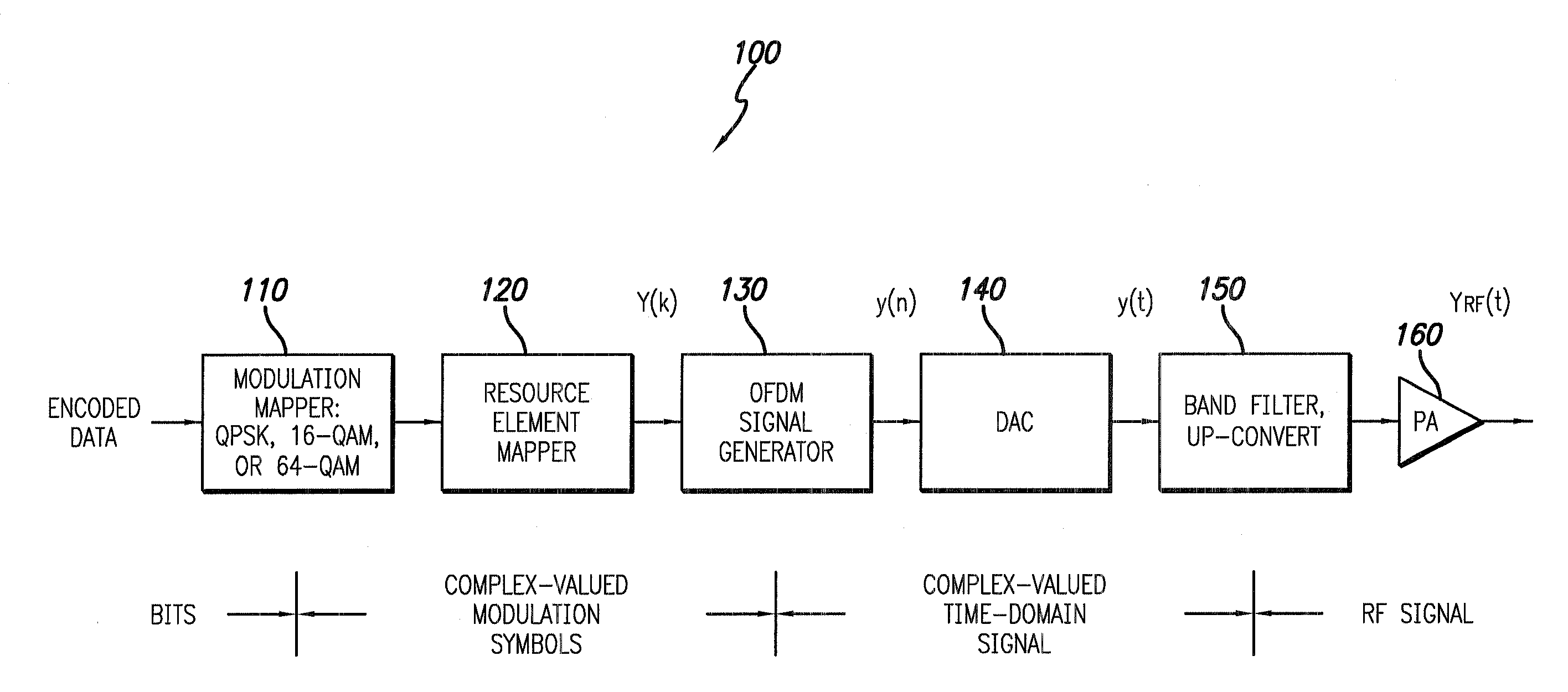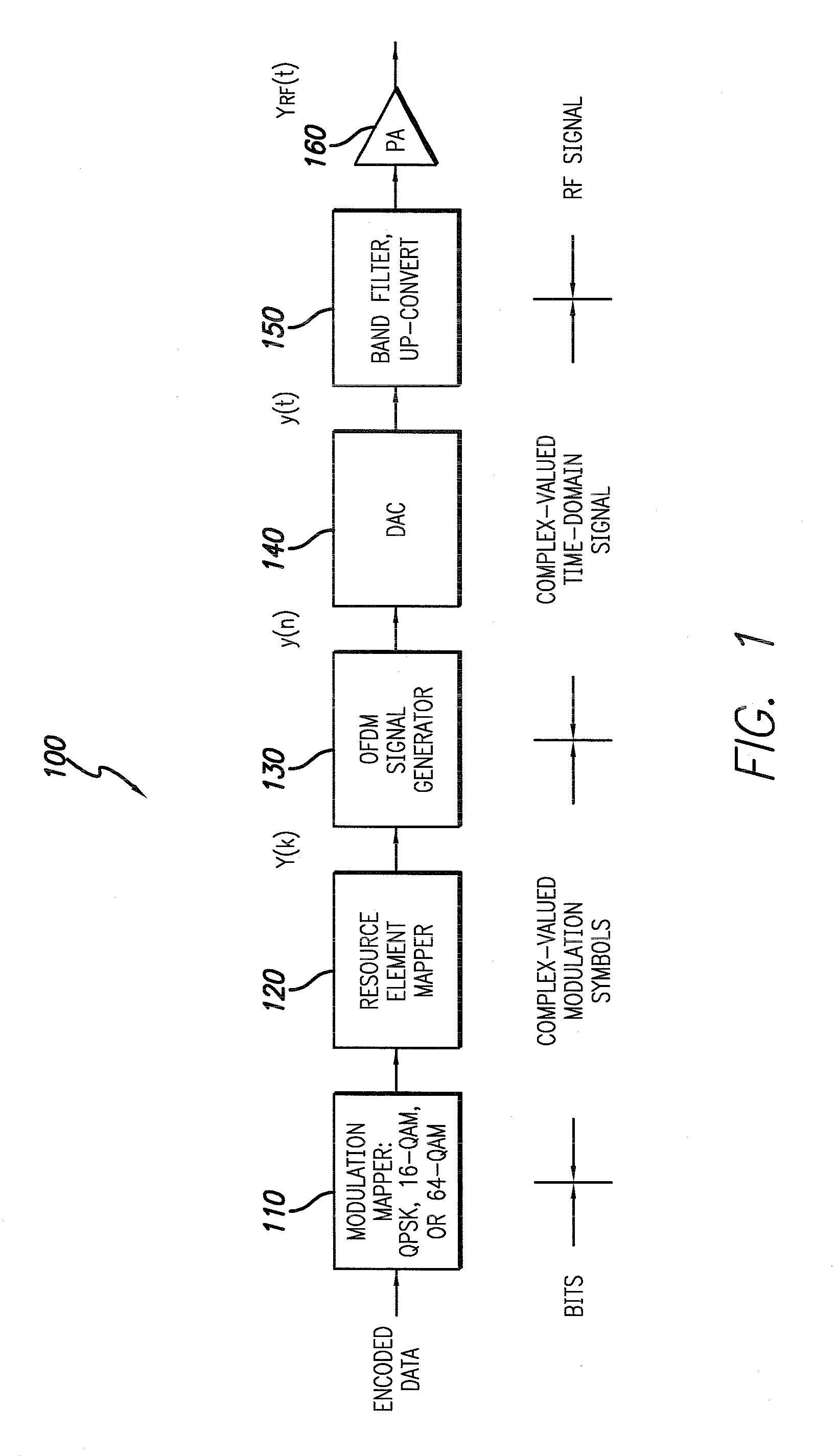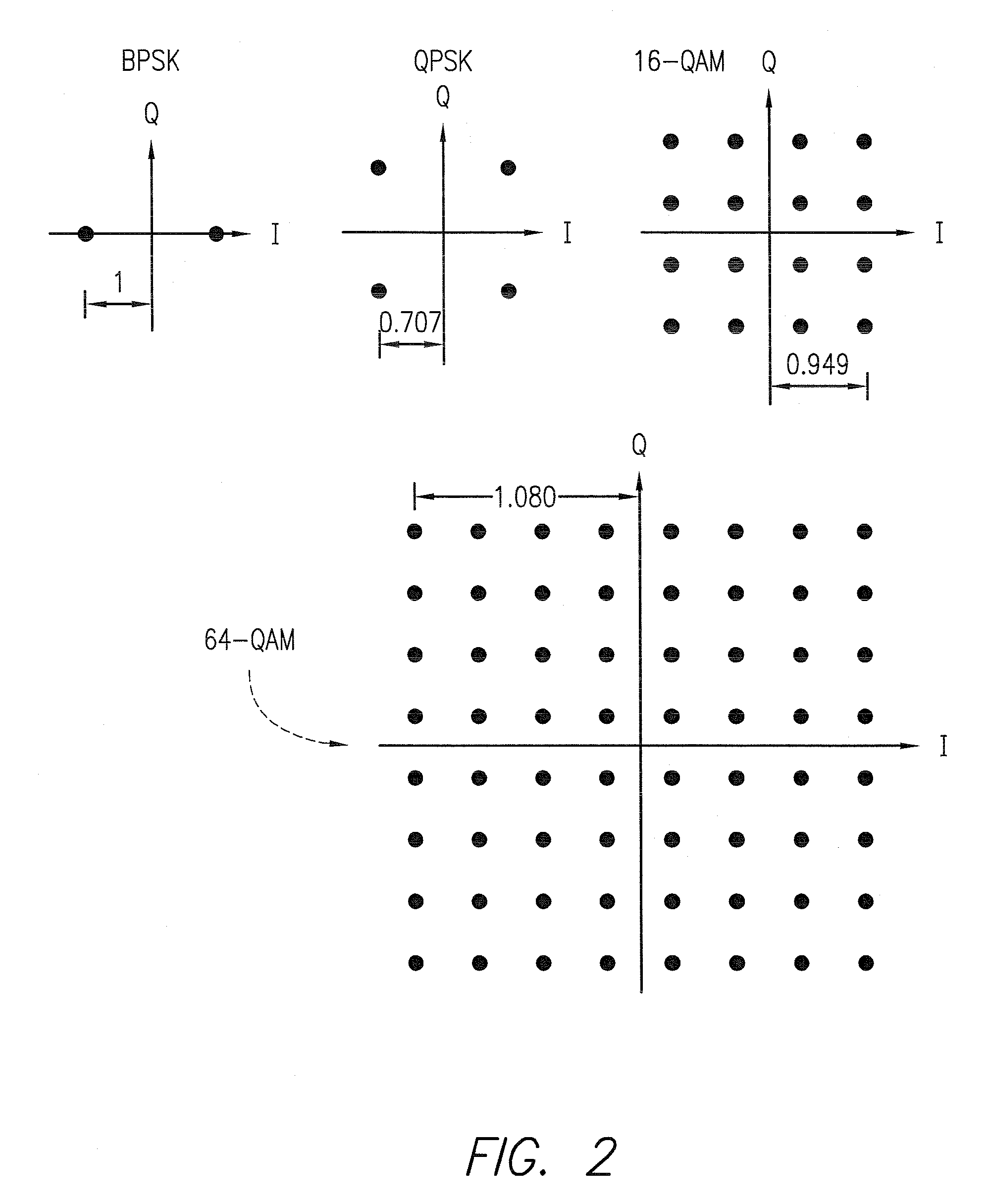Crest factor reduction for OFDM communications systems by transmitting phase shifted resource blocks
- Summary
- Abstract
- Description
- Claims
- Application Information
AI Technical Summary
Benefits of technology
Problems solved by technology
Method used
Image
Examples
Embodiment Construction
[0025]In a preferred embodiment, the present invention is implemented in a communication system employing the LTE downlink standard. Accordingly, first relevant details of the LTE downlink waveform will be described. The down-link waveform used in LTE is based on an OFDM format which, like most OFDM waveforms, can have a large peak-to-average power ratio (PAPR). Crest factor reduction (CFR) is an approach that reduces the waveform peaks without generating spectral regrowth outside of the allocated signal bandwidth. Usually crest factor reduction introduces in-band errors that increase the error vector magnitude (EVM) and bit error rate (BER) of the demodulated signal at the receiver. In contrast the disclosed approach exploits characteristics of the LTE modulation and demodulation to transmit low PAPR waveforms, without spectral regrowth, that can be demodulated without increasing EVM or BER.
[0026]The down-link LTE waveform comprises time-frequency elements which carry digital infor...
PUM
 Login to View More
Login to View More Abstract
Description
Claims
Application Information
 Login to View More
Login to View More - R&D
- Intellectual Property
- Life Sciences
- Materials
- Tech Scout
- Unparalleled Data Quality
- Higher Quality Content
- 60% Fewer Hallucinations
Browse by: Latest US Patents, China's latest patents, Technical Efficacy Thesaurus, Application Domain, Technology Topic, Popular Technical Reports.
© 2025 PatSnap. All rights reserved.Legal|Privacy policy|Modern Slavery Act Transparency Statement|Sitemap|About US| Contact US: help@patsnap.com



